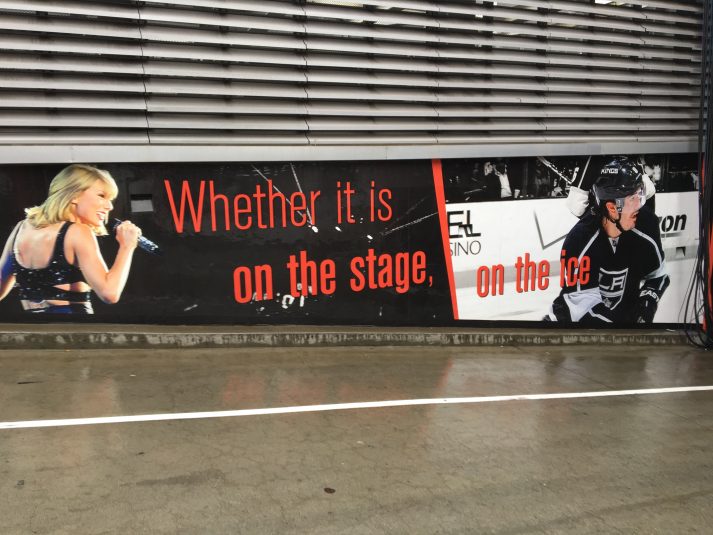How the Grammy Awards Show Gets Live, Broadcast Sound Right
‘Music’s Big Night’ on CBS reflects an intricate workflow
Story Highlights
Telecast from Los Angeles’s Staples Center, Sunday night’s Grammy Awards on CBS were a huge and carefully choreographed ballet of never ending sound, and the rehearsals were just as precisely blueprinted and constantly tweaked.
At the Staples Center, home of the Grammy Awards for 16 years, the staff who get the event on the air have been a mostly consistent cohort for much of that time. Operating out of Music Mix Mobile (M3) Eclipse and Horizon, the two trucks that manage a literal volley of music during rehearsals, were co-broadcast music mixers Eric Schilling and John Harris, who have 12 Grammys and 14 Emmy Awards between them. Also on hand were Hank Neuberger, Grammy Award telecast advisor, broadcast audio, himself a Grammy Award winner, and Michael Abbott, the show’s audio coordinator and the calm center of the broadcast’s audio swirl.
Ping-Pong Sound
The basic workflow has been roughly the same for seven years. The two M3 trucks form cascading audio banks that keep the music flowing from the stage to air. They match a stage design that has evolved in the name of efficiency: in a split-stage layout, as one act performs stage left, the next one is behind a drop-down screen, setting up microphones and instruments to perform stage right. They alternate that way, through three days of rehearsals and on the big night, this year facilitating the hosting of 29 live performances.
From the stage, signal is sent to the M3 Eclipse truck and its Lawo mc56 console. During the three-day run-up to the show, as one artist rehearses on one side of the stage, either Schilling or Harris — they alternate along with the artists on stage — record the tracks, using two redundant Pro Tools systems (the second is a backup), and become familiar with the song. As the next artist begins to rehearse on the other side of the stage, tracks from the previous rehearsal are mirrored on a screen above an identically configured Lawo mc56 aboard M3 Horizon, where Schilling or Harris sits with the artists and their engineers or producers as they do several additional passes through the recording, fine-tuning the mix moves and storing the results as a recallable file that will serve as the starting point for the actual broadcast, in which each performance will be mixed manually.
Wireless Challenges
Some artists — including Bruno Mars, Adele, and Beyoncé — deployed their own wireless microphones. According to Steve Vaughn, an RF coordinator for Soundtronics Wireless, which manages wireless microphones and frequency coordination for the event, behind the stage was a large erase board on an easel with a grid laying out the sequence of performances, which microphones they were using and the assigned frequencies.
Microphones from all the major manufacturers — including Shure, Sennheiser and Audio-Technica — were scattered in as many as 400 channels across a band ranging between 470 MHz and 698 MHz, which also encompassed the ComTech and Clear-Com wireless intercom systems.
On the show night, the mixes, which were done in 5.1 surround, were sent over a Calrec Hydra audio transport and a Gigabit Ethernet network to Tom Holmes, the broadcast production mixer in the relatively spacious audio compartment of NEP’s Denali Summit, parked at the bottom of the Staples Center’s cavernous backstage. On a Calrec Apollo console, Holmes controlled the entire music mix literally from a single fader, mixing it with the show’s other production-audio elements: patter from host James Corden, the acceptance speeches of award winners, 36 channels of EVS playout, 24 channels of prerecorded video, and the 16 microphones picking up the ambience of the Staples Center’s cavernous 150-ft.-high bowl.
New Audio Consoles
In place for nearly a decade, this workflow is continually tweaked. For instance, two years ago, the WDM methodology replaced the multi-mode TAC4 fiber that had been previously used for signal transport from bowl to trucks; last year, the pair of Lawo consoles aboard the M3 trucks replaced the Avid D-Command desks used for several years.
Abbott points out that the Lawo also represents a shift toward a work surface more focused on broadcast applications. “The [Avid] Icon [previously used on the M3 trucks] is not a mainstream broadcast console; the Lawo is,” he observes. “The Lawo is more like a Calrec or a Studer, the ones we encounter most often in broadcast.”
On show night, the audio was sent to CBS’s Technical Operations Center in New York by a combination of satellite and fiber. According to Neuberger, audio transport to the TOC as uncompressed SDI-embedded Dolby E continues to be the format for distribution from New York to affiliates and cable and satellite headends. The main feeds throughout are 5.1 surround, with the downmix done at the set-top box point in the home.
Many performances from the show were available as a VOD stream from CBS for the first time, as a result of a licensing agreement with record labels. Neuberger says the audio was delivered for that application using the Apple ProRes HQ codec, in 24-bit/48-kHz. With a master licensing agreement in place, each individual mix awaited artists’ and Recording Academy approvals before being sent to CBS for streaming. Variety reported that more people signed up for CBS All Access on the Sunday of the Grammys than on any other day thus far in the streaming service’s more than two years of operations. In addition, according to Nielsen, the telecast was viewed by just north of 26 million viewers, up 4% from the previous year’s broadcast.
“We’re focused on the live event,” says Neuberger, who has worked on the broadcast for 28 years, watching it transition from analog to digital, from stereo to surround and now to VOD online. “CBS did live-stream the telecast this year on their new CBS All Access platform. But we’ll see what the future holds.”

